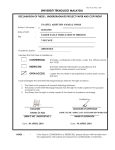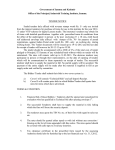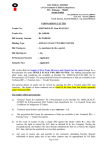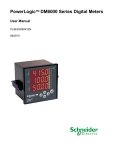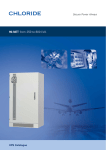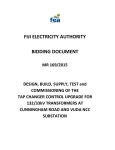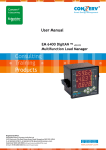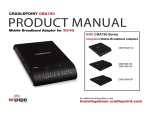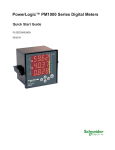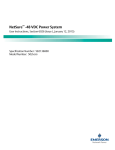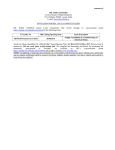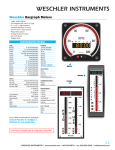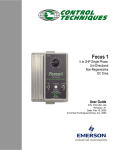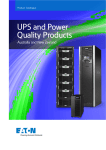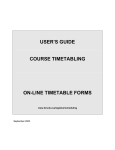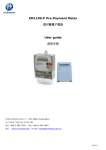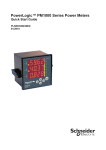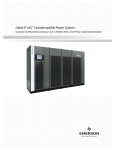Download Parameters with EM3460 Smart Demand
Transcript
SINCE 1989 Quality Products, Prompt Services, Trustful Relationships www.kmindustrialcorp.com KM Industrial Corporation has established itself as a trusted supplier of Electrical, Machinery and Industry Goods over a period of last 24 years. We supply to various industries including but not limited to Power generation plants, Cement Plants, Rolling mills, Railways, Rubber Factories, Textile Mills, Construction Equipment Manufacturers, Oil Refineries, Hospitals, Hotels and Corporate across the country along with a strong market presence in more than 10 countries including UAE, Saudi Arabia, India, Oman, US and Canada. We, at KMIC, assure our clients of committed deliveries and excellent post sales service. This way we believe we sell peace of mind and help our clients focus on their core business. Most of our clients in various industrial areas in India and Middle East have been associated with us for more than 10 years now. Our superior knowledge of products and focus on excellent relationships with clients remains our biggest strength and guiding force in our business. We have deep experience of working with big corporates in Oil & Gas and Construction sector in Middle East. We would be glad to have an association with you. For details, Visit us at Leading Exporters of: • • • • • • • • • • • • • • • • • • • • • • • • • • • • • • • • • • Control Panel Accessories Switchgears Contactors Relays MCBs Circuit Breakers Sensors Automation Drives Power Supplies Control Transformers DC Drives Frequency Converters PLCs Electric Motors Timers Rotary Switches Fuses Semiconductor Fuses Luminaires LED Lighting Power capacitors Indicating Lights Push buttons Wires and Cables Cable Lugs Cable Glands Energy Meters Motor Starters Motor Terminal Plates Slip rings All types of Carbons Holders and Brushes Generator Spares Ball Bearings www.kmindustrialcorp.com 3937/B Behind HDFC Bank, G.B. Road, Delhi (India)-110006 Contact: +91-9971138071, +91-11-23212528 | Email: [email protected] Contact us at: Reference Num 01/2011 +91-9971138071; [email protected] http://kmindustrialcorp.com EM3460 Smart Demand Controller Table of Contents Conzerv EM3460 Smart Demand Controller User manual CTD7308 01/2011 Contact us at: 2 +91-9971138071; [email protected] http://kmindustrialcorp.com © 2011 Schneider Electric. All rights reserved Contact us at: CTD7308 01/2011 +91-9971138071; [email protected] http://kmindustrialcorp.com EM3460 Smart Demand Controller Table of Contents Chapter 1: EM3460 Smart Demand Controller Product Description ...................................................................5 Introduction .............................................................................................................................................................5 Features and Benefits..............................................................................................................................................5 Power Quality Analysis .......................................................................................................................................5 Demand Control with Prediction .........................................................................................................................6 Relay outputs ......................................................................................................................................................6 Field-programmable parameters ........................................................................................................................6 Field-selectable VA Calculation Method .............................................................................................................6 Time of Use (TOU) .............................................................................................................................................7 Auto Reset ..........................................................................................................................................................8 Physical Description ...............................................................................................................................................8 Front Panel .........................................................................................................................................................8 Rear Panel ........................................................................................................................................................11 Parameters with EM3460 Smart Demand Controller ...........................................................................................12 Smart Demand Controller Technical Specifications .............................................................................................13 Chapter 2: Safety Precautions ..............................................................................................................................15 Chapter 3: PROG Menu – Setup ............................................................................................................................17 Programming the Password .................................................................................................................................17 Enter into Setup ....................................................................................................................................................18 Full-Setup..........................................................................................................................................................18 Partial-Setup .....................................................................................................................................................20 View Setup ........................................................................................................................................................21 Setup parameters .............................................................................................................................................21 INTEG, OLD, Profile .............................................................................................................................................24 INTEG ...............................................................................................................................................................24 OLD Data Register ...........................................................................................................................................25 Profile ................................................................................................................................................................25 List of Parameters in EM3460 Smart Demand Controller ....................................................................................28 Chapter 4: Installation ............................................................................................................................................31 Mechanical Installation .........................................................................................................................................31 Location ............................................................................................................................................................31 Mounting ...........................................................................................................................................................33 Electrical Installation .............................................................................................................................................34 Wiring ................................................................................................................................................................34 © 2011 Schneider Electric. All rights reserved 3 Contact us at: EM3460 Smart Demand Controller Table of Contents +91-9971138071; [email protected] http://kmindustrialcorp.com CTD7308 01/2011 Chapter 5: Maintenance and Servicing ................................................................................................................49 Maintenance of EM3460 Smart Demand Controller .............................................................................................49 Cleaning the EM3460 Smart Demand Controller .............................................................................................49 Back-up Circuit Renewal ..................................................................................................................................49 Field Service .........................................................................................................................................................50 Error Codes and Corrections ............................................................................................................................50 Servicing ...........................................................................................................................................................51 Chapter 6: RS 485 Communication .......................................................................................................................53 Appendix A: Four Quadrant Operation ................................................................................................................55 Polarities ...............................................................................................................................................................55 Demand ................................................................................................................................................................55 Energy Parameters ...............................................................................................................................................56 Import - Export Option for Energy .....................................................................................................................56 Power Factor Lock ................................................................................................................................................56 Appendix B: EM3460 Smart Demand Controller Calibration .............................................................................59 Appendix C: Frequently Asked Questions...........................................................................................................61 4 © 2011 Schneider Electric. All rights reserved Contact us at: CTD7308 01/2011 +91-9971138071; [email protected] http://kmindustrialcorp.com EM3460 Smart Demand Controller Chapter 1: EM3460 Smart Demand Controller Product Description Chapter 1: EM3460 Smart Demand Controller Product Description Introduction The EM3460 is a smart demand controller. The smart demand controller monitors over 25 key parameters and replaces over 20 individual transducers and meters for comprehensive load management in 3-phase commercial and industrial applications. This chapter contains the product description, features, etc. The remaining chapters explain the installation and setup of the smart demand controller. Schneider Electric stands behind your EM3460 smart demand controller with complete user support and service. Intended use: The EM3460 smart demand controller is designed for use in industrial and commercial installations by trained and qualified professionals, not for domestic use. Features and Benefits The EM3460 smart demand controller offers comprehensive power and energy monitoring at the feeders and individual loads. The features and benefits are explained in the following sections. Power Quality Analysis The EM3460 smart demand controller gives the power quality measurement parameters. The power quality parameters measured are total harmonic distortion (THD) % for V1, V2, V3, A1, A2, and A3 waveforms. The THD % readings are important as the usage of the thyristor controlled, nonlinear load, in the circuit, have increased. The high THD % readings (greater than 10 % approximately depending on any governing laws and your equipment specifications) warn about the over-heated motors and impending damage to the equipments like power factor (PF) correction capacitors, even the neutral wiring etc, which are not rated for high harmonic currents. Proper filtering reduces the harmonics generated from the loads to acceptable level. THD: Total Harmonic Distortion for Phase-wise Voltage V1, V2, V3 and Current A1, A2 and A3 wave forms. © 2011 Schneider Electric. All rights reserved 5 Contact us at: +91-9971138071; [email protected] http://kmindustrialcorp.com EM3460 Smart Demand Controller Chapter 1: EM3460 Smart Demand Controller Product Description CTD7308 01/2011 th Where Vf is the Fundamental and V2 to V30 are 2nd to 30 Harmonics. Demand Control with Prediction The EM3460 smart demand controller measures, 1. 2. 3. 4. 5. Demand (DM) Maximum demand (MD) with MD occurrence date and time Profile DM Prediction DM and spare load Output relays and control parameters Relay outputs The EM3460 smart demand controller has three change over relay outputs which is explained in the following table. Table 1-1: Relay outputs SHED Indicates that the load shedding is required. RESTORE Indicates that the loads can be restored now. The additional load is indicated by SprLD (+ve). Indicates that demand is predicted to exceed PdDM>UL Upper Limit (UL) within programmed Prediction Interval (PdIN). Load shedding by the amount shown by SprLD (-ve) is necessary to keep demand within the programmed Upper Limit (UL). Alternatively, transfer excess load to an in-house generator. The Prediction Interval (PdIN) provides valuable advance notice for this operation. These relay outputs can be wired to remote annunciators or can be used for automatic operation of circuit breakers through a control contactor. Field-programmable parameters The key parameters like the PT and CT primary values, system type, demand control limits, date, time etc are field-programmable through setup. This makes the ordering and the installation much simpler and easier. Refer to “PROG menu – Setup” on page 17 for more information. Field-selectable VA Calculation Method The EM3460 smart demand controller enables the user to select a VA calculation method between 3d (default) and arithmetic in the field through setup. Refer to “PROG menu – Setup” on page 17 for more information. The VA calculation methods are explained in the following table. 6 © 2011 Schneider Electric. All rights reserved Contact us at: CTD7308 01/2011 +91-9971138071; [email protected] http://kmindustrialcorp.com EM3460 Smart Demand Controller Chapter 1: EM3460 Smart Demand Controller Product Description Table 1-2: VA calculation method VA function display in setup Formula Other Names Suited application 3d (default) U, Apparent, Vectors Best All round Arth Arithmetic Good under low unbalance Time of Use (TOU) This section is applicable only for EM3460 smart demand controller with a RS 485 communication port. The time of use (TOU) is a structure where the energy consumption (kVAh, kWh, kVARh) at different time intervals (user-programmable) can be stored in separate registers. TOU is very useful where the power tariff changes with time of consumption. TOU helps the power utility company to optimize the consumption, throughout the day and night. Due to higher rates at peak hours and lower rates at off peak hours the consumers will try to reschedule their processes to off peak hours to reduce the power costs. This in turn helps the utility to reduce the overload at peak hours and the wastage of power during the off peak hours. Table 1-3: Time of use (TOU) options available in the smart demand controller © 2011 Schneider Electric. All rights reserved TOU options available EM3460 IE & EM3460 TOU option Enable At factory TOU set up through setup utility (ConPAD) at regional service center/sales TOU tariff timings and DM control limits TOU set up through front panel DM control limits Energy TOU 9 INTG2 + 9 Max DM REGs Demand Control TOU Max. 8 UL and LL per day selectable from predefined 16 sets of UL & LL Maximum number of non- overlapping seasons per year 6 Maximum number of non- overlapping tariff time zones per day 8 7 Contact us at: +91-9971138071; [email protected] EM3460 Smart Demand Controller Chapter 1: EM 3460 Smart Demand Controller Product Description http://kmindustrialcorp.com CTD7308 01/2011 TOU options available EM3460 IE & EM3460 Maximum number of INTG 1 (24 hrs Main INTEG) + 8 (TOU Sub INTEG) NOTE: Re-programming of TOU tariff time settings is required, whenever the EB TOU tariff duration and the Indian calendar (based on the public holidays) are changed. Auto Reset The auto reset feature enables the user to reset or clear the INTEG (accumulated values) to zero on a pre-programmed date and time. The existing values are stored in the OLD register and the new values are accumulated in the INTEG. Physical Description FRONT: The front panel consists of: Single row, seven digits, 14 mm, and seven segments LED display with autoscaling capability for Kilo (K) and Mega (M). LED indicators. Seven smart keys for intuitive navigation and easy setup. REAR: The voltage, current, auxiliary supply (control power), and RS 485 communication port terminals are located at the rear of the smart demand controller. Front Panel Func Parameters Trip Figure 1-1: EM3460 smart demand controller front panel and parts Mega VA h Kilo Single row, seven digits, 14 mm, and seven segments LED display Wh VARh PFAvg VAvg Ah F Avg Hrs Integ Old Profile THD% Seven smart keys Conzerv EM 3460 LED indicators 8 © 2011 Schneider Electric. All rights reserved Contact us at: CTD7308 01/2011 +91-9971138071; [email protected] http://kmindustrialcorp.com EM3460 Smart Demand Controller Chapter 1: EM3460 Smart Demand Controller Product Description Keys: Description Table 1-4: Keys description Key Description CLR – Clear To clear the integrated parameter, demand, profile demand, and error codes. PAR – Parameter selection To select the parameter to be displayed. To scroll through the parameters LEDs. FUNC – Function selection To select between one of the functions INTG, OLD, PROFILE, and THD %. To scroll through the FUNC LEDs. SET – Enter To save the values edited in the setup. Up To scroll upwards or view the previous parameter. To decrement the editing value in the setup. More details/down To scroll downward through the parameters. To increment the editing value in the setup. Auto-scroll To auto-scroll between the parameters. Refer to “Autoscroll” on page 10 for more information. © 2011 Schneider Electric. All rights reserved 9 Contact us at: +91-9971138071; [email protected] EM3460 Smart Demand Controller Chapter 1: EM 3460 Smart Demand Controller Product Description http://kmindustrialcorp.com CTD7308 01/2011 Auto-scroll: Auto-scroll allows you to view a set of parameters sequentially for five seconds without any manual key operation. The auto-scroll parameters are factory set. The parameters can be changed. The maximum number of parameters that can be set for auto-scroll is 16. To view auto-scroll parameters: 1. Press . The display shows first the auto-scroll parameter and the corresponding Parameters LED lights. For example, if maximum demand is the first auto-scroll parameter then the MaxDM LED is lit. 2. Press . The display shows the second auto-scroll parameter and the corresponding Parameters LED lights. For example, if demand is the second auto-scroll parameter then the DM LED is lit. 3. Repeat the above steps for the remaining auto-scroll parameters. To enable auto-scroll mode Press continuously in the user mode. The display shows AUTO and scrolls through the auto-scroll parameters. To remove parameters from auto-scroll list: 1. Set the smart demand controller in auto-scroll mode as explained above. 2. Press whenever the parameter you do not want to be in the list is displayed. The parameters not required in the list are removed after displaying its serial number. 3. The smart demand controller exits from the auto-scroll mode and enters user mode, once the parameters are removed from the list. This enables you to insert any other desired parameter in place of the removed parameter. Display messages description Table 1-5: Description of the display messages 10 NULL NULL is displayed, when is pressed before programming the parameters in the auto-scroll parameters list. FULL FULL is displayed, when you try to program more than 16 parameters in the auto-scroll parameters list. AUTO AUTO indicates the auto-scroll mode. USER USER is displayed when the or is pressed in auto-scroll mode. The display comes out of the auto-scroll mode and enters into user mode. © 2011 Schneider Electric. All rights reserved Contact us at: CTD7308 01/2011 +91-9971138071; [email protected] http://kmindustrialcorp.com EM3460 Smart Demand Controller Chapter 1: EM3460 Smart Demand Controller Product Description Rear Panel Figure 1-2: EM3460 smart demand controller rear panel Auxiliary supply (control power) terminals NO NC C NO PdDM > UL NC C NC DM > UL NO C L1 L2 E AUXILIARY RESTORE 11 SUPPLY 12 Rating ac : 240V, 3A; dc : 24V, 2A Use External Spark Quench ac EM 3460 CONTROL OUTPUTS RS 485 PORT Ensure Surge Suppressor is fitted before connecting Aux. Supply. CAUTION See Schneider Electric India Pvt Ltd website www.schneider-electric.co.in for safety precautions, wiring diagrams & EM 3460 control outputs Smart Demand controller Model Acc Class Version Sl. No Options V IN 110 / 415V ac 1 V1 2 V2 4 V3 VN CURRENT INPUT ac 5 S1 Voltage input terminals V1, V2, V3, VN © 2011 Schneider Electric. All rights reserved A1 6 S2 7 S1 A2 8 S2 A 9 S1 A3 10 S2 Current input terminals A1, A2, A3 11 Contact us at: +91-9971138071; [email protected] EM3460 Smart Demand Controller Chapter 1: EM 3460 Smart Demand Controller Product Description http://kmindustrialcorp.com CTD7308 01/2011 Parameters with EM3460 Smart Demand Controller The EM3460 smart demand controller has the following parameters. 1. System and Phase values V (Voltage) A(Current) KVA (Apparent power) KW (Active power) KVAR (Reactive power) PF (Power factor) 2. Line to neutral voltage(Line to star point is computed for 3 wire delta systems) 3. Neutral to Earth voltage(4-wire only) 4. Frequency 5. INTEG Values kVAh kWh kVARh 6. PFavg 7. DM (Demand) Max DM (Maximum demand) 8. Pd DM (Predicted Demand) Spare Load Demand Control output 12 © 2011 Schneider Electric. All rights reserved Contact us at: CTD7308 01/2011 +91-9971138071; [email protected] http://kmindustrialcorp.com EM3460 Smart Demand Controller Chapter 1: EM3460 Smart Demand Controller Product Description Smart Demand Controller Technical Specifications Table 1-6: Technical Specifications Electrical characteristics Sensing 3 Phases. Field programmable for 3 Wire or 4 Wire Measurement True RMS Display update All parameters except demand: Every one second. Demand: Every 15 seconds. Voltage Input 110 to 440 VAC LL nominal (Field Programmable) Surge Crest Factor 850 V peak maximum Line to Line 50 VAC Neutral-Earth 600 VAC Line to Line Overload 347 VAC Line to Neutral 347 VAC Line to Earth 347 VAC Neutral to Earth 2kv 1/50uS Transient, Line – Earth PT Primary Current Input Standard: 5 A AC nominal; Ordering option: 1 A AC Crest Factor Auxiliary supply (control power) 0.1 kV to 999 kVAC (Field Programmable) 10.6 A (2.12A) peak Maximum without loss of accuracy Overload 10 A (2 A) AC continuous 7.5 A (1.5 A) AC without loss of accuracy Surge 25 A (5 A) AC 30 seconds 40 A (8 A) AC seven seconds 100 A (20 A) AC one second CT Primary (1A to 30 kA ) AC (Field Programmable) Standard: Single-phase, 50Hz, 240 VAC nominal. Working range 190 to 270 V. Factory set ordering option: 110 VAC nominal. Working range: 85 to 130 V. Burden PT and CT: 0.2 VA maximum per input signal Auxiliary supply (control power): 5 VA maximum Accuracy For all voltage, current, power, and energy parameters CLASS 1.0 ± (0.2% of Full Scale + 0.8% of rdg + 1 Count) CLASS 0.5 ± (0.1% of Full Scale + 0.4% of rdg + 1 Count) Frequency : ± 0.2% of reading (Ranges 48 - 52 or 60Hz) Control outputs (EM 3460) © 2011 Schneider Electric. All rights reserved Potential free changeover contacts. Three separate outputs for the following conditions: (a) Predicted Demand exceeds Upper Limit (b) Demand exceeds Upper Limit (c) Restore Load Contact Rating: 240V/24V dc, 1A Max, with supplied Spark Quencher paralleled with load. Suitable for control contactor Coil rating: Make 60VA Max Holding 15VA Max 13 Contact us at: +91-9971138071; [email protected] EM3460 Smart Demand Controller Chapter 1: EM 3460 Smart Demand Controller Product Description http://kmindustrialcorp.com CTD7308 01/2011 Mechanical characteristics Dimensions Bezel 192 x 144mm. Depth behind Bezel 110 mm Panel cutout 186mm x 138 mm (+1/ -0 mm) Mounting Panel mounting with four clamps provided. Weight 1800 gms approximately Environmental characteristics Operating temperature 0 to 60 ˚C (32 to 140 ˚F) Safety and standards Emission CISPR22 Fast transient Up to 2kV, IEC 61000 - 4 - 4, level 3 Electrostatic discharge IEC 61000 - 4 - 2 Impulse voltage 6kV, IEC 60060, 1.2/50 Protection against Front: IP 51 dust and water Rear: IP 40 References CBIP 88, IEC 1036 Other characteristics 14 Digital Readout Seven digit, 14 mm, seven segment red LED; Automatic placement of decimal point; Automatic conversion from Kilo to Mega units. Keyboard Ergonomic sealed Membrane type, wipe clean surface Secure settings Access to edit the settings through user-programmable password. © 2011 Schneider Electric. All rights reserved Contact us at: CTD7308 01/2011 +91-9971138071; [email protected] http://kmindustrialcorp.com EM3460 Smart Demand Controller Chapter 2:Safety Precautions Chapter 2: Safety Precautions This section contains important safety precautions that must be followed before attempting to install, service, or maintain electrical equipment. Carefully read and follow the safety precautions outlined below. HAZARD OF ELECTRIC SHOCK, EXPLOSION, OR ARC FLASH Apply appropriate personal protective equipment (PPE) and follow safe electrical work practices. In the USA, see NFPA 70E. Only qualified electrical workers should install this equipment. Such work should be performed only after reading this entire set of instructions. If the equipment is not used in a manner specified by the manufacturer, the protection provided by the equipment may be impaired. NEVER work alone. Before performing visual inspections, tests, or maintenance on this equipment, disconnect all sources of electric power. Assume that all circuits are live until they have been completely de-energized, tested, and tagged. Pay particular attention to the design of the power system. Consider all sources of power, including the possibility of back feeding. Turn off all power supplying the smart demand controller and the equipment in which it is installed before working on it. Always use a properly rated voltage sensing device to confirm that all power is off. Before closing all covers and doors, carefully inspect the work area for tools and objects that may have been left inside the equipment. Use caution while removing or installing panels so that they do not extend into the energized bus; avoid handling the panels, which could cause personal injury. The successful operation of this equipment depends upon proper handling, installation, and operation. Neglecting fundamental installation requirements may lead to personal injury as well as damage to electrical equipment or other property. NEVER bypass external fusing. NEVER short the secondary of a PT. NEVER open circuit a CT; use the shorting block to short circuit the leads of the CT before removing the connection from the smart demand controller. Before performing Dielectric (Hi-Pot) or Megger testing on any equipment in which the smart demand controller is installed, disconnect all input and output wires to the smart demand controller. High voltage testing may damage electronic components in the smart demand controller. During the normal operation of this equipment, hazardous voltages might be present at the rear terminals, which can cause severe injury or death. High voltages are likely to be present even after the smart demand controller has been switched off. Ensure proper grounding for the smart demand controller. Failure to follow these instructions will result in death or serious injury © 2011 Schneider Electric. All rights reserved 15 Contact us at: EM3460 Smart Demand Controller Chapter 2: Safety Precautions 16 +91-9971138071; [email protected] http://kmindustrialcorp.com CTD7308 01/2011 © 2011 Schneider Electric. All rights reserved Contact us at: CTD7308 01/2011 +91-9971138071; [email protected] http://kmindustrialcorp.com EM3460 Smart Demand Controller Chapter 3: PROG Menu – Setup Chapter 3: PROG Menu – Setup This chapter explains how to set up the EM3460 smart demand controller, program the password system, view the different smart demand controller parameters, and clear the integrator, profiler, etc. The smart demand controller has three different types of setup modes. 1. Full-setup mode: Programming the parameters before installing the smart demand controller. 2. Partial-setup mode: Programming the parameters periodically, during operation. 3. View setup mode: In this mode you can only view the setup parameters. Programming the Password All the actions performed by and require a password entry to avoid any unauthorized use. The is used for set up. The HiLo profile, or the demand profile. is used to clear the integrator, There are four different levels of passwords: 1xxx, 2xxx, 3xxx, and 4xxx. The xxx in each password is an independent number from 000 to 999 and can be changed periodically by its authorized user. The 1xxx level password is normally allocated to the supervisor. The supervisor assigns the other level passwords to the different shift in-charges. The supervisor can change these passwords; even he/she does not know the full password. The following table explains the password access levels for the different setups. Table 3-1: Password access levels for different setups Setup 1xxx 2xxx 3xxx 4xxx Full-setup Y Y - - Partial-setup Y Y Y Y PF lock, L0, Step, hrs Y Y - - SetCode (own code) Y Y Y Y SetCode (all codes) Y Y - - Y Y - - CLR (INTEG, profile) © 2011 Schneider Electric. All rights reserved Password 17 Contact us at: EM3460 Smart Demand Controller Chapter 3: PROG Menu – Setup +91-9971138071; [email protected] http://kmindustrialcorp.com CTD7308 01/2011 NOTE: 1. If you prefer convenient password settings over more security, leave the passwords to the factory defaults 2000, 3000, and 4000. But change the password 1000 before someone re-programs the passwords otherwise you will get locked out permanently. If you do not enter the correct password while entering the setup, you will not be able to change the setup parameters values but you can view them. When changing codes, remember to note the new code in a safe place. if you forget your code, the supervisor can give you a new one. If the supervisor forgets and cannot enter his correct 1xxx code, then code re-assignments can no longer be done. To make the unit operational again, the smart demand controller must be disconnected and sent to Schneider Electric. Schneider Electric must erase the smart demand controller completely and re-program it. The unit will be returned with complete reset and factory settings. All data will be lost. This service charge is not covered by the warranty and necessarily includes re-calibration since cal data also gets affected. 2. 3. Enter into Setup Press and simultaneously to enter setup. You can enter setup in three different modes; full-setup, partial-setup, and view setup. The following sections explain how to enter into the above mentioned setup modes and to edit the set parameters. Full-Setup The full-setup should be completed before installing the EM3460 smart demand controller. During full-setup mode only the auxiliary supply must be connected to the smart demand controller. The following table explains how to enter the full-setup and edit the set parameters. Table 3-2: Full-setup entry and set parameters editing Step 1 Perform Keep and pressed, while powering up the smart demand controller. Output Description The display shows TEST CODE y. To enter full-setup, code entry is required. NOTE: If you do not know the code or if you want to only view the parameters, press . The display shows CODE N. Press . You can now view the parameters. 2 Press to enter code. The display shows 1000 with blinking 1. 1000 is the default factory set code. NOTE: Use and change the code. 18 to © 2011 Schneider Electric. All rights reserved Contact us at: CTD7308 01/2011 +91-9971138071; [email protected] Step 3 4 5 Perform Press code. to accept the Press to clear. The smart demand controller shows the entry to the full-setup mode. http://kmindustrialcorp.com EM3460 Smart Demand Controller Chapter 3: PROG Menu – Setup Output Description The display shows SUCCESS and then CLR Y. In the full-setup mode, by default the display asks to clear the values. The values need to be cleared in order to enter into full-setup. CLR Y The INTEG, old, profile (DM, HiLo), and DM values are cleared. The display shows FULL SET and then STAR.3E. 1. The display shows ERR 158, if the input signals are present. Disconnect all the wirings except auxiliary (control power) wiring. 2. The display shows NO SET, if the code is failed to enter. In both these cases repeat the Procedure starting with step 1. E.g., change the system type to DELTA.2E from default STAR.3E. 7 8 9 Press . The display shows blinking STAR.3E. Press . The display shows blinking DELTA.2E. Press to accept the new value. 10 This indicates that now the value can be changed. The display shows DELTA.2E. If you want to change the other setting press and perform the above mentioned steps. 11 Press continuously until DONE Y is displayed. 12 Press 13 Press values. 14 The display shows DONE Y with blinking Y. The display shows STORE Y with blinking Y. . to save the new The smart demand controller exits from the setup mode and enters the run mode. The display shows STORED and exits from the setup. The display shows 0.000. The value shown is of RMS VLL parameter. Use the , , and to view all the other parameters. NOTE: If you do not want to save the new value, press after step 11. The display shows DONE N. Press . The new value is not saved. In order to edit the values, repeat the procedure starting with step 1. The settings programmed in the full-setup mode can be viewed, when the smart demand controller is operating, but cannot be changed. © 2011 Schneider Electric. All rights reserved 19 Contact us at: EM3460 Smart Demand Controller Chapter 3: PROG Menu – Setup +91-9971138071; [email protected] http://kmindustrialcorp.com CTD7308 01/2011 Partial-Setup Partial-setup is used to make periodic on line adjustments, while the smart demand controller is in operation. However, before using new instrument, the full-setup must be completed. The following table explains how to perform partial-setup. Table 3-3: Partial-setup Step Perform Output 1 In order to enter into partial-setup, the smart demand controller should be in RMS mode. No FUNC LED is lit. Press 2 3 4 Press Press Description until no FUNC LED is lit. . and simultaneously. The display shows HRS or any other parameter in the partial-setup. Now the unit is ready to enter setup. The display shows PAR SET and then CODE Y. Enter the valid code to enter into the partialsetup. In table 3-2, perform the steps 7 to 14 to edit the set parameters and store the new value. NOTE: During partial-setup, clearing of integrators is not required. The smart demand controller continues normal operations while in partial-setup. However, do not enter or remain within the partial-setup mode unnecessarily. This will increase the possibility of errors, particularly from in-advertent key operations. Do not attempt to set up the smart demand controller at the critical processing points such as midnight. 20 © 2011 Schneider Electric. All rights reserved Contact us at: CTD7308 01/2011 +91-9971138071; [email protected] http://kmindustrialcorp.com EM3460 Smart Demand Controller Chapter 3: PROG Menu – Setup View Setup View setup mode allows the user to only view the setup parameters. In order to enter into view setup mode, do not enter the code while entering into the setup. Refer to “Full-setup” on page 18 for more information about setup entry. Setup parameters The following table gives the setup parameters available in full and partial-setups of the smart demand controller. Table 3-4: Setup parameters in full and partial-setups Parameters Time: 24Hr format. The internal clock of the smart demand controller is initialized at the time of installation, via the full-setup. Set the hours and minutes to Range 00.00.00 to 23.59.59 Default value 12.00.00 correct value or and . You can set the seconds value to zero using the above mentioned keys. Once set, the clock maintains the correct time even through power failures. The partial-setup allows only small corrections (± 5 minutes) to the system’s clock. Start %: Sets the "starting current" of the smart demand controller. If set very low i.e., below 0.15% (of full scale), then "creep" condition is introduced. As a result, the integrator continuously runs with smallest pick-up values when there is no load, or from auxiliary fans, pumps or other loads, when the main load is off. 0 to 99.9% 0.15 % of amps Full scale of the A,VA,W In addition, the smart demand controller START setting allows the setting of starting current, kW or kVA, as shown by the LED in full / partial -setup. Power Factor (PF) Lock: 0,1,2,3 0 9600.E.1 300 9600.E.1 Controls the Integrator and 0, 1, 2, 3 Demand operation levels during leading power factor. For non-tariff related applications, use the default level of 0 Port Set: Sets the communication parameters – Baud Rate (300 to 19,200 Baud), Parity (Odd, Even, No, Forced – 9 bit mode), Stop Bits (1. with No Parity, 2. Stop Bits). © 2011 Schneider Electric. All rights reserved 19200,O, E,N 21 Contact us at: EM3460 Smart Demand Controller Chapter 3: PROG Menu – Setup +91-9971138071; [email protected] Parameters ID: Device identification (Address) for the smart demand controller. Each instrument which is connected to the same communication port of the energy management system should have a different (unique) Unit ID. The instruments respond only to those commands matching its device ID. SetCode: Range 1 to 247 1000 to 4999 http://kmindustrialcorp.com CTD7308 01/2011 Default value 001 000 This allows the authorized User to change his own code. The old code needs to be set Old xxx correctly, followed by the new code. If your code is 1xxx, then after entering your old code, New xxx your new code may be 1xxx, 2xxx, 3xxx or 4xxx code (see “Programming the password” on page 17 for more information). This allows you to change and re-assign the other User’s codes without knowing them. UL (Main UL): Demand control upper limit (UL). To start with the UL should be set around 90 % of contract demand (for 1500 kVA contract demand, set the UL to 1300 kVA). 1% to 100% 1100 K of Full Scale If the peak loads are more than UL2, then the demand control trip point will be slightly above UL due to the 15 second demand control cycle. The UL setting is used only for demand profile generation. LL (Main LL). Demand control lower limit (LL). 10% to 99% 1000 K of UL Should be set roughly to 90% of UL. (Say 1100kVA.) This determines the point for restoration of loads. NOTE: For plants with smaller loads, move LL closer to UL. The frequent of occurrence of load shedding cycles will be large but the loads shed are likely to be smaller. On the other hand if the plants have a few large loads, increase the spacing of LL below UL suitably. 22 © 2011 Schneider Electric. All rights reserved Contact us at: CTD7308 01/2011 +91-9971138071; [email protected] Parameters Range DM control TOU settings (tou.UL.LL): These settings can be accessed only if the TOU table is programmed. If not, it goes to next setup parameter. Press Set key to d.ctrL “y” (blink display) allows the user to configure 16 sets of UL and LL and gives the permission to allow next setup parameter ( U.L.Sl.Cfg). DM control TOU UL and LL boundary limits (min. and max.) are as same as as Main UL and Main LL. This DM control UL and LL will be activated as per TOU U.L.Sl.Cfg (next setup parameter) configuration. If DM control TOU is not there, EM 3460 will activate Main UL and LL Mapping of DM control TOU limits in to TOU zones(U.L.Sl.Cfg) : Sx.Yy.Zz Where S – season, x – Season Number. Y.Slot name (E – Week End, D – Week Day, H – holiday), y – slot number Zz – nth set of DM control UL and LL (For Not available 0 should be programmed. Max. up to 16. Numerical value 1 will index UL1 and LL1 programmed. 2 means UL2 and LL2, 3 gives UL3 and LL3 etc. U1. 1100k, L1. 1000K . . .u p t o . . . .U16 EsLD: 0 to 99% of LL Essential Load. The smart demand controller allows critical loads like numerically controlled machines, which cannot be included in the load shedding exercise. http://kmindustrialcorp.com EM3460 Smart Demand Controller Chapter 3: PROG Menu – Setup Default value U1 to U16 1% to 100% of full scale L1 to L16 10% to 100% of UL. S1. E1. 01 . . ...up to. . . . .S1. H8. 00 (default 0 – No TOU UL and LL selected) e.g., S1. D1. 03 configuration s activate U3 and L3 for the first week day slot of Season1. 0 The demand control algorithm ensures that this essential load will be allowed to run with minimum interference, (say 150 kVA). Typically, EsLD should be below 10% of UL. – If the EsLD is programmed to a high value, the load shed action will be advanced unnecessarily to protect the large essential load. PdIN (Prediction Interval) Prediction Interval. The demand control algorithm is smart enough to constantly predict your demand. ¼th to ½ of 7 minute EM 3460 Prediction d.Prd Naturally, the prediction interval is valid for any period with in 1 to 30 minute of the demand period. PdIN is programmable from ¼th to ½ of the demand period. If your load variation is a very large (peak load more than twice UL), the smaller PdIN setting should be used for smoother control. © 2011 Schneider Electric. All rights reserved 23 Contact us at: EM3460 Smart Demand Controller Chapter 3: PROG Menu – Setup +91-9971138071; [email protected] http://kmindustrialcorp.com CTD7308 01/2011 Parameters Range L0: 880 k 10% to 100% of Full Scale Level 0. Demand Profile mid band with levels L1 to L9 above and L - 1 to L - 9 below, separated by the step size. Step: Demand Profile step size. Sets the spacing of the Profile levels. Poles: Default value 1% to 5% of 40 k Level 0 2,4,6,8 4 VA “3d” or Arth 3d Sets the number of poles of the supply generator to measure its Speed in rpm. VA mode selection: Set 3d or Arithmetic VA INTEG, OLD, Profile INTEG The integrator stores the energy parameters for energy management. The energy parameters kVAh, kWh, kVARh, and PF avg show the forward flow of the energy (import by consumer). With import and export (IE) option, you will see the reverse flow values. Clearing INTEG You can clear INTEG at any convenient time. Typically clear the INTEG during the end of each month, to coincide with the electricity bill. In this way, the OLD register contains the last month’s records which can be compared with that of the electricity bill. Now the INTEG starts recording this month’s data. If the week totals are important, clear the INTEG weekly for energy studies. Allow the INTEG to run for at least for five minutes, after clearing, to ensure that the recorded values are accurate. INTEG records the values from zero (during start), when it is cleared and accumulates values until it is cleared manually or overflowed. If the EM 3460 smart demand controller is operating continuously with absolute maximum signals (600 V and 7.5 A or 1.5 A outputs), then the Integrator will fill up and automatically clear itself at the end of three months. For signals which are lower, the Integrator can run longer, up to 9999 Hours (power on + power off) maximum. For the most meaningful results, it is recommended that the INTEG is cleared through to coincide with an important event such as billing, at least once in every three months. 24 © 2011 Schneider Electric. All rights reserved Contact us at: CTD7308 01/2011 +91-9971138071; [email protected] http://kmindustrialcorp.com EM3460 Smart Demand Controller Chapter 3: PROG Menu – Setup The Integrator continues to run as long as the signals are present and the auxiliary supply (control power) is ON. If the auxiliary supply (control power) comes from a source different from the signal being monitored, then the signal may be live while the auxiliary supply (control power) has failed. In this case, no readings will get recorded. In case the auxiliary supply (control power) is powered by an uninterruptable supply (UPS), the load run hrs and OFF Hrs will still be recorded correctly, since load shutdown is determined through the failure of the voltage and current signals. NOTE: 1. It is recommended that the auxiliary supply (control power) for the smart demand controller is derived from its input signals. In this case, if any one of them fails the other will also fail. Thus the stoppage of readings, when only the aux supply is failed, can be prevented. 2. Use the and to quickly compare the INTEG and OLD values of the displayed parameter. OLD Data Register The OLD data register accumulates the energy values cleared at the end of each energy study. Remember that the OLD values will be over-written, each time when the INTEG is cleared. NOTE: Use the and to quickly compare the INTEG and OLD values of the displayed parameter. Profile The EM3460 smart demand controller has two different profiles. 1. HiLO profile 2. Demand (DM) profile HiLo Profile The HiLo profile records the high and low values for MD, VA, W, VAR, PF, V, A, and F. The HiLo values are H1 (highest), H2, H3, H4, L4, L3, L2, and L1 (lowest). The trend of the one second RMS value of the appropriate parameter is examined for maximum (peaks) and minima’s (troughs). Lead/Lag and Import/Export polarity is ignored, even if you have not ordered the IE Option. This allows you to make easy magnitude comparisons. For the F profile, the average frequency over 20 cycles is used. When the values are high, it is possible that there will be minima’s recorded when the values were low. Therefore, it is possible that the H4 reading is less than that of the L4 reading. Once the profile is cleared, the profile starts with all zeros. Normally H1 and L1 are the first to receive the entries. The other values continue to get recorded as and when the trend shows maximum and minima’s. The H2, H4, L4, L3, and L1 values show zero until sufficient highs and lows have been detected. © 2011 Schneider Electric. All rights reserved 25 Contact us at: EM3460 Smart Demand Controller Chapter 3: PROG Menu – Setup +91-9971138071; [email protected] http://kmindustrialcorp.com CTD7308 01/2011 A minimum of one hour is required for all the H’s and L’s of the profiler to receive entries. The smart demand controller forces a minimum gap of 15 minutes between any H’s or L’s of the same parameter, to prevent sudden filling up of noise in the profiler. Since the internal resolution of the profiler is greater than that of the display, two H events or two L events will appear when the values are steady. However, the later event replaces the earlier one. Figure 3-1: HiLo profile (H2) H1 (H2) H2 L4 VALUE H3 H4 L3 L2 L1 TIME Demand Profile The demand profile provides the cumulative frequency histogram of demand values. The profile generates nine levels above and below the programmed level 0, at the spacing programmed by the step size in the setup menu. At every demand interval (choices 1 to 30 minutes), the highest demand value in the interval is compared with the 19 Levels. A count of levels, where the demand value has exceeded, is maintained against each level. Thus the total count of demands compared is also maintained. Table 3-5: Demand profile 26 LEVEL DEMAND kVA CUMULATIVE COUNTS L9 1750 0 L8 1700 0 : : : L3 1450 0 L2 1400 3 L1 1350 16 L0 1300 35 L-1 1250 39 L-2 1200 73 © 2011 Schneider Electric. All rights reserved Contact us at: CTD7308 01/2011 +91-9971138071; [email protected] LEVEL DEMAND kVA CUMULATIVE COUNTS L-3 1150 127 : : : L-8 900 1352 L-9 850 1379 Total 1440 http://kmindustrialcorp.com EM3460 Smart Demand Controller Chapter 3: PROG Menu – Setup The following example explains demand control and optimization using demand profile of the smart demand controller. Consider that the present upper limit (UL) is L0 and from the table above mentioned the value is 1300 kVA. This sample demand profile shows that 35 demands have crossed the UL, causing almost as many loads shedding in that month. Total demand gives approximately one month with 30 min demand period. The UL value of 1300 kVA probably is unrealistically low and may be causing excessive production losses and rejects due to frequent load shedding. If additional demand can be contracted and the UL is raised to 1350 kVA, there will be a dramatic improvement. Moreover, the time of these top three Demand peaks can easily be pointed out through the HiLo for MD, providing a parallel input load scheduling and demand optimization. The demand profile provides valuable post-facto analysis for setting demand control levels towards demand optimization rather than merely demand control. It allows immediate visualization for load shedding effect of different selected UL, rather than just providing demand control. The profile is not just theoretical numbers, since it is the data gathered at your plant, for your process patterns. All this can be achieved, while you safely operate without risk, at your pre-selected UL. The HiLo and demand profile start dates and times are also provided. Use separately reset the HiLo and demand profiles. © 2011 Schneider Electric. All rights reserved to 27 Contact us at: EM3460 Smart Demand Controller Chapter 3: PROG Menu – Setup +91-9971138071; [email protected] http://kmindustrialcorp.com CTD7308 01/2011 List of Parameters in EM3460 Smart Demand Controller The following table gives the complete list of parameters, sub-parameters in RMS, INTEG, OLD, functions of the EM3460 smart demand controller. Table 3-6: Parameters list for smart demand controller Parameters [FUNC] Sub parameters [v] [PAR] RMS Basic (All FUNC LEDs are OFF) V Vavg, ry, yb, br, Ln, r,y,b,n,r0 ,y0, b0 A Aavg, r,y,b,n, r0, y0, b0 F (freq) F, Generator RPM Hrs Dy.dt.mth, Hr:min:sec ON time,Dy.dt.mth, Hr:min:sec OFF time,Dy.dt.mth, Hr:min:sec ,In XXXX Intr (No. of power interruptions) in XXX Power Demand VA VA, r, y, b W W, r, y, b VAR VAR, r, y, b PF PF, r, y, b UL LL EsLD PdIN MaxDM Max DM DM (Auto) DM (Auto Sync mode) DM (rtc) DM (User) DM, rd, tr (Rising DM, time remaining) DM, rd, tr PdDM SprLD 28 © 2011 Schneider Electric. All rights reserved Contact us at: CTD7308 01/2011 +91-9971138071; [email protected] Parameter http://kmindustrialcorp.com EM3460 Smart Demand Controller Chapter 3: PROG Menu – Setup Sub parameters [v] [FUNC] [PAR] Parameters V Vavg A Ah F (Fr eq) Favg Hrs Since Dy.dt.mth, Hr:min:sec, Run Hrs r XXXX.XX, Basic Off Hrs r XXXX.XX, Intr in XXX VA (fwd) VAh, (rev) VAh, (total) VAh VAh VA R (fwd) VARh, (rev) VARh, (netl) VARh VARh PF (fwd) Wh, (rev) Wh, (total) Wh Wh Demand Integ & Old (fwd) Wh, (rev) Wh, (net) Wh Wh Energy Integ & Old W Ma xD M MaxDM, Dy.dt.mth, Hr:min:sec V H1, Dy.dt.mth, Hr:min:sec, H2....H4 L4, Dy.dt.mth, Hr:min:sec, L3....L1 A H1, Dy.dt.mth, Hr:min:sec, H2....H4 Basic Basic Profile L4, Dy.dt.mth, Hr:min:sec, L3....L1 F H1, Dy.dt.mth, Hr:min:sec, H2....H4 L4, Dy.dt.mth, Hr:min:sec, L3....L1 Hrs H1, Dy.dt.mth, Hr:min:sec, H2....H4 L4, Dy.dt.mth, Hr:min:sec, L3....L1 VA H1, Dy.dt.mth, Hr:min:sec, H2....H4 Profile L4, Dy.dt.mth, Hr:min:sec, L3....L1 © 2011 Schneider Electric. All rights reserved 29 Contact us at: EM3460 Smart Demand Controller Chapter 3: PROG Menu – Setup +91-9971138071; [email protected] W http://kmindustrialcorp.com CTD7308 01/2011 H1, Dy.dt.mth, Hr:min:sec, H2....H4 L4, Dy.dt.mth, Hr:min:sec, L3....L1 VA R H1, Dy.dt.mth, Hr:min:sec, H2....H4 PF H1, Dy.dt.mth, Hr:min:sec, H2....H4 Power L4, Dy.dt.mth, Hr:min:sec, L3....L1 TH D 30 Ma xD M H1, Dy.dt.mth, Hr:min:sec, H2....H4 DM (dprof) L0 xxxxx L4, Dy.dt.mth, Hr:min:sec, L3....L1 L-1 XXXXX, L-2....L-9. Demand Only Basic parameter s Profile Power L4, Dy.dt.mth, Hr:min:sec, L3....L1 L9 XXXXX, L8....., L1 XXXXX, (total) tXXX V r,y,b A r,y,b © 2011 Schneider Electric. All rights reserved Contact us at: CTD7308 01/2011 +91-9971138071; [email protected] http://kmindustrialcorp.com EM3460 Smart Demand Controller Chapter 4: Installation Chapter 4: Installation This chapter explains EM3460 smart demand controllers, Mechanical installation Electrical installation Mechanical Installation Location Usage First, decide on how the EM3460 smart demand controller is going to be used. If you do not already have an energy management program in operation, then your energy consultant should be able to help you identify which load(s) offer maximum savings potential. This will help you decide: 1. Which point is to be monitored? 2. From what location the readings will be viewed? 3. Who must have access to the instrument and how often? For best performance, choose a location which provides all the required signals with minimum wiring lengths. The smart demand controller provides three output relays with change-over contacts for demand control. If these outputs are going to be used, then they will typically be: 1. Wired to a local annunciator panel or, 2. Extended to remote annunciators, and / or, 3. Used for automatic tripping through control contactors wired to a circuit breaker. © 2011 Schneider Electric. All rights reserved 31 Contact us at: EM3460 Smart Demand Controller Chapter 4: Installation +91-9971138071; [email protected] http://kmindustrialcorp.com CTD7308 01/2011 HAZARD OF EQUIPMENT DAMAGE Ensure that the smart demand controller output relay ratings are not exceeded. If these outputs drive the coil of an auxiliary control contactor, then the spark quencher supplied with the smart demand controller must be connected in parallel with the contactor coil. Otherwise, the coil's inductive spikes will burn out the output relays and Schneider Electric’s warranty will be void. Failure to follow this instruction will result in equipment damage. The smart demand controller must be connected to monitor the incoming feeder. Also, the DM>UL demand control output should trip the entire load connected to the incoming feeder and not just a partial load. Otherwise, the demand will continue to rise and you will incur a maximum demand penalty. Panel Considerations and Environment The EM3460 smart demand controller is a high-precision measuring instrument and its operating environment is of utmost importance. For maximum performance, the instrument should be mounted in a dry, dust-free location, away from heat sources and strong electromagnetic fields. To operate reliably, the following conditions must be met: Table 4-1: Environmental conditions Storage Temperature -20 to 70 0C (-4 to 158 0F) Operating Temperature 0 to 60 0C (32 to 140 0F) ambient. Relative Humidity Maximum 95 % non-condensing. The smart demand controller should be separated from other power equipment and sufficient space must be provided all around for cooling air to rise vertically past the instrument. The cooling air temperature must be below the specified operating temperature. The panel or housing, in which the smart demand controller is mounted, should protect it from dust, moisture, oil, corrosive vapors, etc. The panel doors must ensure easy access to the smart demand controller wiring for trouble-shooting. Allow clearance if the unit is going to swing out, as well as adequate slack in the wiring. Allow space for terminal blocks, shorting blocks, auxiliary contactors and other necessary components. 32 © 2011 Schneider Electric. All rights reserved Contact us at: CTD7308 01/2011 +91-9971138071; [email protected] http://kmindustrialcorp.com EM3460 Smart Demand Controller Chapter 4: Installation Viewing For ease of operation, the location should be preferably at, or slightly above, eyelevel. For viewing comfort, minimize glare and reflections from strong light sources. Mounting Before mounting and wiring, the full-setup procedure should have been completed. The EM3460 smart demand controller is panel mountable and the specifications are given in the following table. Table 4-2: Mounting specifications Panel cut-out 186+1.0-0 mm (w) x 138+1.0-0 mm(h) DIN 43700 and IS 2419-1979 Panel thickness 0.5 to 4.0 mm Instrumental bezel dimension 192 x 144 mm Depth behind bezel 110 mm (leave clearance for wires) Mounting clamp screws Phillips (Star), 4 nos. Terminal screws Combination Phillips & slotted head The cut-out should be punched with the proper tool and should be free from burrs. NOTE: Instead of a 186 x 138 mm punch, two accurately spaced operations of a 138 x 138 mm punch may be used. Before wiring, insert the smart demand controller into the cut-out from the front. Then, fasten the four corner clamps from the rear, along with the retaining ring. While supporting the smart demand controller from the front, tighten all four clamp screws in a criss-cross pattern till all slack is taken up, then apply one full turn. Do not over-tighten. A Phillips (star) head screwdriver (such as Taparia 862) in good condition is recommended, to avoid damaging the screw heads. The same screwdriver may be used for the terminal block. © 2011 Schneider Electric. All rights reserved 33 Contact us at: EM3460 Smart Demand Controller Chapter 4: Installation +91-9971138071; [email protected] http://kmindustrialcorp.com CTD7308 01/2011 Electrical Installation Wiring PT and CT Selections and Wiring Considerations The accuracy of measurement is determined by the accuracy and phase shifts of the PTs and CTs. Instrument class 1 or better PTs and CTs are recommended. Do not use protection class (10P10, etc.) CTs (they have poor accuracy and phase characteristics) to feed the EM 3460 smart demand controller. Ensure that the CT primary rating has been selected so that your normal load variation lies between 40% and 80% of its full scale. If your CT is over-rated, and say only 3% to 10% of its full scale is utilized, accuracy suffers. Moreover, the smart demand controller control settings cannot be programmed for very low values. On the other hand, if the CT is under-rated, then you may exceed its full-scale and burn out both the CT and the smart demand controller. The PT's and CT's must have adequate VA rating to support the burden (loading) on the secondaries. You may want to support the auxiliary supply burden from one of the PTs. CT wiring can impose additional burden (loading) on the CT. For example, if the CT has a 5 A secondary and the wire resistance is 1.0 Ω, then the CT has to support an additional burden of 5 VA. If the wiring distance from the CT secondary is greater than say two meters, then a 5 A CT could get over-burdened and give large errors; a 1 A CT secondary is recommended. The smart demand controller should be conveniently located for connections to the voltage (PT) and current (CT) signals, the auxiliary supply (usually derived from the voltage signals), the control relay outputs and most important, a good grounding point. NOTE 1: The field programmable PT and CT primary settings may be utilized to calibrate out the PT and CT amplitude full-scale error, for improved accuracy. NOTE 2: With dual-range CTs, select the best range for programming. Do not change the range thereafter; otherwise the smart demand controller will read erroneous values. Earth (Ground) Connection: Protection and Shielding Use a dedicated solid copper wire of at least 14 AWG, for best grounding connection. Remove any oxide film at the wire ends using sand-paper. Crimp a spade lug for connecting the ground wire reliably, to the smart demand controller terminal block. The other end of the ground wire must be tightly bolted to the ground point. The ground point should be selected for hard grounding and minimum errors, due to distribution voltage drops. The panel door hinges do not provide a reliable ground path. So connect the grounding wire from the smart demand controller directly to the panel frame grounding bolt and not to the panel door. 34 © 2011 Schneider Electric. All rights reserved Contact us at: CTD7308 01/2011 +91-9971138071; [email protected] http://kmindustrialcorp.com EM3460 Smart Demand Controller Chapter 4: Installation Alternatively, you can use a 40/36 multi-strand tinned copper wire. Thick multi-strand wire provides the worst grounding for spikes. HAZARD OF EQUIPMENT DAMAGE The earth terminal of the smart demand controller must be connected to a reliable, low impedance earth ground point. If this is not done the surge protection in the smart demand controller as well as its electro-magnetic shield will not operate. Failure to follow this instruction will result in equipment damage. Auxiliary Supply (Control Power) Connections The smart demand controller requires a single-phase AC, 50/60 Hz auxiliary power supply to supply power to its electronic circuitry. There are two auxiliary supply terminals L1 and L2. The live (hot) wire goes to the L1 terminal. Before any other connections are made, complete the full-setup procedure with only the auxiliary supply connection. Burden: 5 VA Max, 240 V (or 110 V)AC, 50/60 Hz. For 440 V LT systems: Order the smart demand controller with a standard 240 VAC supply that can be tapped from line and neutral. For 110 V HT systems: Order the 110 V auxiliary supply option. The 110 VAC supply can be tapped directly from one 110 V PT secondary. NOTE 1: The auxiliary power supply must be derived from the voltage signals. NOTE 2: If you have a 440 V three-wire delta system and a reliable neutral is not available, a 440 V: 240 V supply transformer should be used to provide the standard 240 V auxiliary supply. Such a transformer may be ordered from Schneider Electric. Contact your Schneider Electric representative for availability. HAZARD OF EQUIPMENT DAMAGE Do not feed the auxiliary supply terminals of the smart demand controller with a voltage greater than the rating marked on the label. Failure to follow this instruction will result in permanent equipment damage. © 2011 Schneider Electric. All rights reserved 35 Contact us at: EM3460 Smart Demand Controller Chapter 4: Installation +91-9971138071; [email protected] http://kmindustrialcorp.com CTD7308 01/2011 Surge Suppressor (Spark Quench): An external surge suppressor (an MOV) is supplied, to suit your smart demand controller operating voltage (110 V / 240 V). This must be firmly fitted at the smart demand controller auxiliary supply terminals, in parallel with auxiliary supply wiring. See “Figure 4-1: Fuse and surge suppressor at smart demand controller aux supply terminals”. Please ensure that a series fuse has been provided in the auxiliary supply. The surge suppressor self destructs (shorts) to protect the smart demand controller, when the transients are above their ratings. Replacement of surge suppressor is not covered under warranty and must be done by the user to ensure continued operation. Figure 4-1: Fuse and surge suppressor at smart demand controller aux supply terminals NC NO C E RESTORE Voltage Signal Connections There are four voltage input terminals marked as V1, V2, V3, and VN. Any unused voltage input terminals must be connected to ground and must not be left open. Refer to “Connection diagrams” on page 38 for more information. Field programmable PT primary range :0.1 to 999 kVAC L-L. Field programmable PT secondary range :100 to 600 VAC L-L. Voltage input burden :0.2 VA Max per input. Current Signal Connections There are three pairs of current input terminals marked A1 (S1, S2), A2 (S1, S2), and A3 (S1, S2). For proper measurements, the phase identification as well as the polarity of the current signals must be correct. The forward flow (import by consumer) current direction must be into the S1 terminal and the exit from the S2 terminal. Any unused current input must have its two terminals (S1, S2) shorted together and also grounded preferably. The standard EM3460 smart demand controller comes with 5 A AC current inputs for connection through a 5 A current transformer (CT). If your CT has a 1 A secondary or you plan to use your smart demand controller as a portable unit with 36 © 2011 Schneider Electric. All rights reserved Contact us at: CTD7308 01/2011 +91-9971138071; [email protected] http://kmindustrialcorp.com EM3460 Smart Demand Controller Chapter 4: Installation Schneider Electric Clamp-On current probes, a 1 A (ordering option) can be set in the factory. Figure 4-2: Ar line to load direction LINE LOAD Ay Ar S1 S2 S1 Import S2 Note unused Ay input. Only relevant EM 3460 terminal block connections are shown. Field programmable CT primary range :1 to 30,000A AC. CT secondary :5 A AC standard (1 A ordering option) CT burden :0.2VA max per input. System Type The EM3460 smart demand controller should know the type of 3-phase system it is connected to. This is programmed in the full-setup procedure. See “Full-setup” on page 18 for more information. The system type consists of the measurement mode (Star 3E, Delta 2E or Delta 3E) and the signal mode (4V3A, 3V3A or 3V2A). Other combinations are primarily meant for testing and educational use and not suitable for tariff related use. The following table helps you to select the correct system type. Table 4-3: System Type SETUP SYSTEM TYPE APPLICATION CONNECTED SIGNALS © 2011 Schneider Electric. All rights reserved V1 V2 V3 VN A1 A2 A3 Y Y Y Y Y Y (Y) Y Y Y Y Y Y Y Y Star3E 4V3A For three element (Wattmeter) measurement of all 4-wire systems (with Neutral) Y Gnd Y Delta2E 3V2A For two element measurement of 3-wire systems without A2 CT. A2 is computed Y Gnd Y Y Y Delta2E 3V3A 3-wire systems with A2 CT. Y Gnd Y Y Y Delta3E 3V3A Three element measurement of 3-wire systems where phase-wise power is important. But accuracy is less than Delta 2E, especially if the system is highly (>10%) unbalanced 37 Contact us at: EM3460 Smart Demand Controller Chapter 4: Installation +91-9971138071; [email protected] http://kmindustrialcorp.com CTD7308 01/2011 Connection Diagrams First check all the polarities and ratings. If signals should be looped to other equipment, then current inputs must be in series and voltage inputs must be in parallel. Voltages up to 440 VAC LL (250 VLN) with 25% overload capability, up to a maximum of 600 VAC LL (330v L-N) may be connected directly to the EM3460 smart demand controller voltage inputs. Voltages greater than this, typically HT systems, must be connected through potential transformers (PT's). The smart demand controller allows field programming of both the PT primary and PT secondary voltages. With direct voltage connection (no PT's), program Vsec= Vpri. Typically Vpri= 0.415 kV and Vsec= 415 V for Asia. Current inputs must be connected through CTs. The CT secondary may be 1 A or 5 A. So select the smart demand controller current input accordingly at the time of ordering. See “Current Signal Connections” on page 36 for more information. For safety, ground the PT and CT secondaries. 38 © 2011 Schneider Electric. All rights reserved Contact us at: CTD7308 01/2011 +91-9971138071; [email protected] http://kmindustrialcorp.com EM3460 Smart Demand Controller Chapter 4: Installation Figure 4-3: 3-phase 3-wire (delta) HT systems with 2 PTs and 2 CTs © 2011 Schneider Electric. All rights reserved 39 Contact us at: EM3460 Smart Demand Controller Chapter 4: Installation +91-9971138071; [email protected] http://kmindustrialcorp.com CTD7308 01/2011 Figure 4-4: 3-phase 3-wire (delta) HT systems with 3 PT's and 3 CT's NO NC C NO PdDM > UL NC C NC DM > UL NO C L1 L2 E AUXILIARY RESTORE 11 SUPPLY 12 Rating ac : 240V, 3A; dc : 24V, 2A Use External Spark Quench ac ! EM 3460 CONTROL OUTPUTS Ensure Surge Suppressor is fitted before connecting Aux. Supply. RS 485 PORT ! CAUTION See Schneider Electric India Pvt Ltd website www.schneider-electric.co.in for safety precautions, wiring diagrams & EM 3460 control outputs Smart Demand controller Model Acc Class Version Sl. No Options V 110 IN / 415V 1 V1 2 V2 4 V3 CURRENT INPUT ac ac VN 5 S1 A1 6 S2 7 S1 A2 8 S2 A 9 S1 A3 10 S2 NOTE 1: PTs are required for voltages greater than 440v ac L-L (600v ac L-L max). 40 © 2011 Schneider Electric. All rights reserved Contact us at: CTD7308 01/2011 +91-9971138071; [email protected] http://kmindustrialcorp.com EM3460 Smart Demand Controller Chapter 4: Installation Figure 4-5: 3-phase 4-wire (Star) LT Systems with direct voltage connections (voltages less than 600 VAC L-L) and 3 CT's. NO NC C NO PdDM > UL NC C NC DM > UL NO C L1 L2 E AUXILIARY RESTORE 11 SUPPLY 12 Rating ac : 240V, 3A; dc : 24V, 2A Use External Spark Quench ac ! EM 3460 CONTROL OUTPUTS Ensure Surge Suppressor is fitted before connecting Aux. Supply. RS 485 PORT ! CAUTION See Schneider Electric India Pvt Ltd website www.schneider-electric.co.in for safety precautions, wiring diagrams & EM 3460 control outputs Smart Demand controller Model Acc Class Version Sl. No Options V 110 IN / 415V 1 V1 2 V2 4 V3 CURRENT INPUT ac ac VN 5 S1 A1 6 S2 7 S1 A2 8 S2 A 9 S1 A3 10 S2 NOTE 1 : With a direct voltage connection (no PTs), programme Vsec = Vpri. Typically, Vpri = 0.415kv, Vsec = 415v © 2011 Schneider Electric. All rights reserved 41 Contact us at: EM3460 Smart Demand Controller Chapter 4: Installation +91-9971138071; [email protected] http://kmindustrialcorp.com CTD7308 01/2011 Figure 4-6: Single-phase 2-wire LT systems with direct voltage connections (voltages less than 340 VACL-N) NO NC C NO PdDM > UL NC C NC DM > UL NO C L1 L2 E AUXILIARY RESTORE 11 SUPPLY 12 Rating ac : 240V, 3A; dc : 24V, 2A Use External Spark Quench ac ! EM 3460 CONTROL OUTPUTS Ensure Surge Suppressor is fitted before connecting Aux. Supply. RS 485 PORT ! CAUTION See Schneider Electric India Pvt Ltd website www.schneider-electric.co.in for safety precautions, wiring diagrams & EM 3460 control outputs Smart Demand controller Model Acc Class Version Sl. No Options V 110 IN / 415V 1 V1 2 V2 4 V3 CURRENT INPUT ac ac VN 5 S1 A1 6 S2 7 S1 A2 8 S2 A 9 S1 A3 10 S2 NOTE 1: With a direct voltage connection (no PT's), Programme Vsec = Vpri. Typically, Vpri = 0.415kv, Vsec = 415v. NOTE 2 : For V and A, the Phase 1 value should be viewed. Vavg and Ah (INTEG) will be 1/3 rd of the correct value. All the remaining parameters will be measured correctly. 42 © 2011 Schneider Electric. All rights reserved Contact us at: CTD7308 01/2011 +91-9971138071; [email protected] http://kmindustrialcorp.com EM3460 Smart Demand Controller Chapter 4: Installation Figure 4-7: Demand control output connections NO NC C PdDM > UL NO NC C DM > UL NC NO C L1 L2 RESTORE Rating ac : 240V, 3A; dc : 24V, 2A Use External Spark Quench ac EM 3460 CONTROL OUTPUTS NO NC C PdDM > UL NO NC DM > UL C NC NO EM 3460 CONTROL OUTPUTS © 2011 Schneider Electric. All rights reserved C RESTORE Rating ac : 240V, 3A; dc : 24V, 2A Use External Spark Quench E AUXILIARY 11 SUPPLY 12 L1 L2 ! E AUXILIARY 11 SUPPLY 12 ac ! 43 Contact us at: EM3460 Smart Demand Controller Chapter 4: Installation +91-9971138071; [email protected] http://kmindustrialcorp.com CTD7308 01/2011 The EM3460 smart demand controller must monitor the incoming feeder. If adequate load peak management action commensurate with the predicted demand control output and (negative) spare load warnings is not taken, the smart demand controller DM > UL demand control output activates. This takes place at the next 15 second demand update after your demand exceeds your programmed upper limit. If the DM > UL output is used for automatic tripping, then it must be wired up to trip the entire load connected to your incoming feeder and not just a partial load. If you do not trip your total load immediately, the demand will continue to rise and you will incur a demand penalty. Wiring Cross-check (Phase Angle Analysis) 3-phase electrical wiring requires special attention for the correct identification of the voltage and current signal phases as well as current signal polarity (S1, S2). Any error, either during installation or any re-wiring, will give wrong readings on your instrumentation and possibly cause damage to rotating machinery. Wiring errors are difficult to detect as the wrong readings are often close to your expectation. The phase-sequence errors are not evident from the power or energy readings, except in the exchange of two element Wry and Wby readings. The EM3460 smart demand controller has a built-in phase analyzer to show fundamental V1, V2, V3, A1, A2 and A3 vector phase angles. After completing the setup and wiring, run the smart demand controller and view these phase angle readings for an instant verification of correct signal connections. Press until V or A LED lights. Press the [v] key repeatedly. The voltage phase angles are displayed with respect to V1 and the current phase angles are displayed with respect to the corresponding voltage vector. Make sure that you have loads switched on, add up to at least 10% of the current full scale and that these loads are resistive. Below 10%, your plant characteristics could give you misleading readings. For example, power factor correction capacitors often remain in-circuit and could give you highly misleading current phase angles. 44 © 2011 Schneider Electric. All rights reserved Contact us at: CTD7308 01/2011 +91-9971138071; [email protected] http://kmindustrialcorp.com EM3460 Smart Demand Controller Chapter 4: Installation Table 4-4: Phase angles with correct wiring and resistive (unity PF) loads RYB Sequence 0 0 RBY Sequence Remarks 0 V1 0 0 V20 1200 2400 V30 2400 1200 A10 00 00 A20 00 00 A30 00 00 For Unity Power Factor HAZARD OF ELECTRIC SHOCK, EXPLOSION, OR ARC FLASH An incorrect phase sequence will rotate 3-phase motors in the wrong direction, as a result damage the machinery and cause serious injury. Failure to follow this instruction will result in death or serious injury The following three checks are performed to identify any connection errors: 0 1. If there is an interchange in the voltage phase connection, then the 120 and 0 240 readings will get exchanged. This amounts to a reversal in phase sequence. 0 2. In case of interchange between two current signals, then they will show 120 , 0 0 120 or 240 . 3. If the polarity (S1, S2) of any current signal is reversed, then it will show an 0 additional shift of 180 . In combination with Error 2 above, the affected current phase angle will be 0 0 around +60 or -60 . The error, often occurring on all three current signals, can be detected with the recommended minimum level of resistive loading. See the example that follows. Before proceeding, any error in the wiring must be corrected now. © 2011 Schneider Electric. All rights reserved 45 Contact us at: EM3460 Smart Demand Controller Chapter 4: Installation +91-9971138071; [email protected] http://kmindustrialcorp.com CTD7308 01/2011 NOTE 1: The actual readings may show small variations (say +50) depending upon the unbalances in the system. Current phase angles will show additional variations depending on the phase-wise power factor. NOTE 2: If you have programmed your EM 3460 Setup for Delta 3V2A (no A2 current signal), ignore the A2 Phase Angle since it is computed vectorially from A1 and A3 and does not need to be separately corrected. NOTE 3: The current phase angles are given for forward flow of kW (import by the consumer). For reverse flow (export by consumer), the angles will be 1800 instead of 00. NOTE 4: The smart demand controller power (kW) reading polarity is positive for forward flow (import by consumer) and negative for reverse flow (export by consumer). NOTE 5: For integration of exported energy, the import-export (-IE) option is required. The smart demand controller demand computation locks out reverse flow (export by consumer) of power both with and without the -IE Option. See “Appendix A: Four quadrant operation” on page 55 for more information. An Example Two troublesome wiring errors are used to illustrate Phase Angle analysis with your EM 3460. Figure 4-8: With correct connections RYB Sequence: V10 = 00,V20 =1200, V30 = 2400 Vy 120 O 15 Ay 0 0 0 0 0 O Ar O 0 Vr 0 Current Vectors:A1 = 0 ,A2 = 15 , A3 = 30 Vb 240 30 Ab O O Figure 4-9: Error case one Case 1:A10 = -450, A20 = -300, A30 = -600 Symptoms: All currents are -300 to -600. A1 = -A2, A2 = -A3, A3 = -A1 Current Phases interchanged anti-clockwise and S1, S2 Polarities reversed. Correction: A1 = -A3, A2 = -A1, A3 = -A2 46 Vy 120 O Ay(-Ab) -30 O -60 O Ab(-Ar) 0 O Vr -45 O Ar(-Ay) Vb 240 O © 2011 Schneider Electric. All rights reserved Contact us at: CTD7308 01/2011 +91-9971138071; [email protected] http://kmindustrialcorp.com EM3460 Smart Demand Controller Chapter 4: Installation Figure 4-10: Error case two Case 2 Symptoms : A10 = 900, A20 = 600, A30 = 750 0 : All currents are +60 to +90 A1 = -A3, O Vy 120 0 A2 = -A1, A3 = -A2 Ar(-Ab) O 90 O -60 Ay(-Ar) O 0 Vr O -75 Ab(-Ay) Current Phases interchanged Vb 240 O clockwise and S1, S2 Polarities reversed. Correction © 2011 Schneider Electric. All rights reserved : A1 = -A2, A2 = -A3, A3 = -A1 47 Contact us at: EM3460 Smart Demand Controller Chapter 4: Installation 48 +91-9971138071; [email protected] http://kmindustrialcorp.com CTD7308 01/2011 © 2011 Schneider Electric. All rights reserved Contact us at: CTD7308 01/2011 +91-9971138071; [email protected] http://kmindustrialcorp.com EM3460 Smart Demand Controller Chapter 5: Maintenance and Servicing Chapter 5: Maintenance and Servicing This chapter describes information related to maintenance and servicing of your EM3460 smart demand controller. The smart demand controller does not contain any user-serviceable parts. If the smart demand controller requires service, contact your local sales representative. Do not open the smart demand controller. Opening the smart demand controller voids the warranty. Maintenance of EM3460 Smart Demand Controller Cleaning the EM3460 Smart Demand Controller Clean any grime accumulated on the EM3460 smart demand controller front panel, using a soft cloth dampened (not wet) with soap-water or a mild detergent. Do not exert excessive pressure over the displays, while cleaning. HAZARD OF ELECTRIC SHOCK, EXPLOSION, OR ARC FLASH Apply appropriate personal protective equipment (PPE) and follow safe electrical work practices. In the USA, see NFPA 70E. Do not use any solvents or abrasives to clean the smart demand controller. Ensure that the smart demand controller, especially the terminal area is free from any liquid. Do not clean the smart demand controller terminal area. Only qualified and trained personnel should clean the terminal areas. Before cleaning, ensure that all the connections to the smart demand controller are deenergized and the terminal screws are tightened properly. Do not dismantle or open the covers of the smart demand controller. Failure to follow these instructions will result in death or serious injury Back-up Circuit Renewal The EM 3460 smart demand controller data and clock back-up component requires renewal typically after 10 years from the date of the first full-setup. If the operating temperature specifications of the smart demand controller have been grossly exceeded, then you need to renew them a bit early. If the unit displays “Err 66” on power up, please contact Schneider Electric for back-up circuit renewal. See “Field service” on page 50 for more information on error messages displayed in the smart demand controller. Approximately another four weeks of backup under auxiliary supply failure may be possible, without loss of data. © 2011 Schneider Electric. All rights reserved 49 Contact us at: EM3460 Smart Demand Controller Chapter 5: Maintenance and Servicing +91-9971138071; [email protected] http://kmindustrialcorp.com CTD7308 01/2011 Field Service Error Codes and Corrections The EM3460 smart demand controller has been designed to ensure reliability. The smart demand controller has several error correction and recovery features in order to handle severe disturbances. In the rare event that it is unable to recover by itself, it displays an error message such as “Err 151”. In case of an acute error (such as Err 128: Setup Error), the EM 3460 shuts down and the EM 3460 Output Relays are put in the Shed position. 1. When the smart demand controller displays an error, note down the error number and then press . 2. Repeat the same if error prevails. 3. Finally, power down the smart demand controller and power it up again after two minutes. In most cases, normal operation begins. In some cases, where the full recovery is not possible, the unit operates with some data loss or with reduced accuracy until it gets serviced. 4. If the error still persists, carry out a full-setup. Refer to “Full-setup” on page 18 for more information. The following table gives the error code, its description, and action required when the error code is displayed. Table 5-1: Error codes and descriptions Error code Error description Err 65 50 Action required on display of error code Contact Schneider Electric for service Err 66 Data back-up circuit renewal required Contact Schneider Electric for service. Approximately four weeks of normal operation remain before data is lost on auxiliary supply failure. Err 128 Fatal setup error Repeat full-setup. System will restart with all data cleared. Err 131 Calibration out of specification Err 129 -133 Non-recoverable integrator error Err 134 Non-recoverable integrator Error Err 135 Non-recoverable profile error Press to acknowledge the error and continue operation with reduced accuracy of up to ±2%. Contact Schneider Electric at the earliest for re-calibration. to acknowledge the error and clear the integrator. to acknowledge the error and clear the old register only. to acknowledge the error and clear the profiles. © 2011 Schneider Electric. All rights reserved Contact us at: CTD7308 01/2011 +91-9971138071; [email protected] http://kmindustrialcorp.com EM3460 Smart Demand Controller Chapter 5: Maintenance and Servicing Error code Error description Action required on display of error code Err 150 Improper selection of electrical system Re-enter the full-setup menu and correct the first two Settings (Star / Delta, 4V3A /3V3A). Err 151-153 Sampling short-cycle error Contact Schneider Electric for service and re-calibration. and (This error may occur very rarely under severe disturbance or if operated at temperature extremes. If this occurs very frequently even under proper operating conditions, then loss of data, reduced accuracy and possible damage are indicated). Err 162-165 Err 158,159 Improper procedure warning (This error typically occurs when the calibration procedure is not being correctly followed. May also take place when entry to the full-setup is attempted while the unit is still wired to the panel). Err 166 Suspected hardware problem If this recurs, contact Schneider Electric for Service and re-calibration. NOTE: If the error number indicates data loss, then ensure a fresh start. Repeat the full-setup procedure, originally used, when the smart demand controller was first installed. If the full-setup must be delayed due to your operational needs, then periodically cross-check the readings until the full-setup can be done, as the data loss could give rise to erroneous readings. The smart demand controller demand control outputs should not be used in this case. If even the full-setup does not clear the problem, contact Schneider Electric for service. Servicing If the EM3460 smart demand controller fails, the unit has to be disconnected and dismounted from the panel and sent to Schneider Electric for servicing. To make this step convenient, the initial installation should include the following points: The mounting, of the smart demand controller, should allow easy access to the mounting clamps and terminals blocks. The PT secondary connections and auxiliary supply should be easy to deenergize and disconnect. Installing protective fuses, for example, achieves the dual purpose of protection and easy disconnection. A CT shorting block should be installed so that the current inputs can be disconnected without the danger of open-circuiting the CT secondary and tripping the protective relays. If the smart demand controller control relays are used, then a by-pass switch should be installed. © 2011 Schneider Electric. All rights reserved 51 Contact us at: EM3460 Smart Demand Controller Chapter 5: Maintenance and Servicing +91-9971138071; [email protected] http://kmindustrialcorp.com CTD7308 01/2011 Wiring shall be routed to allow easy disconnection from the smart demand controller. The wires should be properly labeled and color-coded to allow easy re-connection to the serviced smart demand controller. For disconnection and removal, refer to “Chapter 2: Safety precautions” on page 15 for more information. 52 © 2011 Schneider Electric. All rights reserved Contact us at: CTD7308 01/2011 +91-9971138071; [email protected] http://kmindustrialcorp.com EM3460 Smart Demand Controller Chapter 6: RS 485 Communication Chapter 6: RS 485 Communication This section is meant to assist experienced systems integrators while connecting the EM3460 smart demand controller to a personal computer (PC). If you are not a Systems Integrator, we recommend that you use one; it’s much more efficient that way. The Schneider Electric Energy Management Systems group can provide complete Energy Management networks and related services. The Communication between the PC & the smart demand controller is in master-slave mode, where in the PC (master) sends a command (query) containing the instrument ID and the address of the information required. The specified smart demand controller then decodes the command and replies with the requested data (usually in 50 ms to 75 ms from end-of-query to start-ofreply). The PC recognizes all the Schneider Electric Instruments (the smart demand controller, data concentrator for DM 52 energy meters, etc) connected to the RS 485 network by a unique number between 1 and 247, called instrument ID. This number uniquely identifies each instrument on the RS 485 Network. The standard communication settings are: 1. PROTOCOL : MODBUS RTU 2. BAUDRATE : 9600. (300 to 19200 baud supported) 3. DATA BITS : 8 Bits. 4. PARITY : EVEN 5. STOP BIT :1 The parameters addresses are given in the following table. Table 6-1: Parameter addresses © 2011 Schneider Electric. All rights reserved Parameter Description Address A Amperes 3013 V Voltage 3009 kW Active power 3003 PF Power factor 3007 kWh Active energy 3123 kVARh Reactive energy 3125 MD Maximum demand 3735 53 Contact us at: EM3460 Smart Demand Controller Chapter 6: RS 485 Communication +91-9971138071; [email protected] http://kmindustrialcorp.com CTD7308 01/2011 The communication error and the display messages are given in the following table. Table 6-2: Communication error and display messages 54 Conditions Display Messages Parity, framing & overrun errors "o" Break Error "b" Tx or Rx Buffer Overflow "0" Invalid Unit id "u" CRC check error "c" Illegal Data Address "A" Communication Illegal Function "F" Rx "r" Tx "t" © 2011 Schneider Electric. All rights reserved Contact us at: CTD7308 01/2011 +91-9971138071; [email protected] http://kmindustrialcorp.com EM3460 Smart Demand Controller Appendix A: Four Quadrant Operation Appendix A: Four Quadrant Operation Polarities The EM 3460 carries out true four quadrant measurements for power parameters (kVA, kW, kVAR, PF). The polarities of these quantities are shown below. Figure A-1: Four quadrant polarities LINE LOAD REVERSE (EXPORT) V FORWARD (IMPORT) A S1 S2 POWER FLOW PF = 0 +kVAR +kVARh PF = -, LEAD, Capacitive O Ø = 90 to 180 EXPORT OF ENERGY (kWh REVERSE FLOW) -IE Option PF = +, LAG, Inductive O Ø = 0 to 90 O Q2 Q1 Q3 Ø = 30 Ø = - 30 OO = 330 Q4 PF = 0.99 -kW -kWh PF = +, LAG, Inductive O Ø = 180 to 270 O O PF = 0 -kVAR -kVARh O PF = 0.99 +kW +kWh PF = -, LEAD, Capacitive O Ø = 270 to 360 IMPORT OF ENERGY (kWh FORWARD FLOW) O Demand The demand computation of the EM3460 smart demand controller is locked during reverse flow (export by consumer) of power. i.e., the demand is computed only for instants of forward flow of power (kW) and is indicative of the peak loading by the consumer, for which billing is done. Reverse flow (export) of power is not integrated. If power flow is constantly reverse (export by consumer), then the demand registered will be zero. This is based on the direction of flow of real power (kW) and holds true whether the demand parameters are field programmed for either kVA or kW. The demand of exported kVA or kW can be measured. See “Import-export option for energy” on page 56 for more information. © 2011 Schneider Electric. All rights reserved 55 Contact us at: EM3460 Smart Demand Controller Appendix A: Four Quadrant Operation +91-9971138071; [email protected] http://kmindustrialcorp.com CTD7308 01/2011 Energy Parameters The EM3460 smart demand controller distinguishes the direction of power flow (kW). It integrates energy parameters kVAh, kWh, kVARh and PF (avg) only during the forward flow of energy (kwh import by the consumer), which accurately reflects the billing. For example, PF (avg) is the average power factor at which the consumer has imported Energy (kWh). Import - Export Option for Energy If you have ordered the import-export (-IE) Option, then energy export as well as net (kWh, kVARh) and total (kVAh PF Avg) readings are additionally available. The Power Factor Lock operates as programmed, for the Export direction as well. NOTE: If you have not ordered the -IE Option, to measure only the reverse flow energy, just reverse all three input polarities (S1, S2). This will also reverse the forward flow (import) and the reverse flow (export) polarities of kW, kVAR and PF. This is the way to measure demand for the exported kW or kVA, irrespective of having -IE Option or not. Power Factor Lock Internationally, capacitive loading is permitted, to varying extents, in tariff metering. This is done by locking the accumulation of selected energy parameters, while the load power is capacitive. The EM3460 smart demand controller handles this situation with power factor (PF) lock. In the partial-setup after “start %”, the display shows PF lock. It displays PF.Loc.0, where 0 is the default Locking Level. The different levels and their effects are explained below. The levels can be changed using the partial-setup procedure. The locking levels and their effects are: 0 = No lock. 1 = kVARh is locked. 2 = kVARh and kVAh are locked. 3 = kVARh, kVAh and DM (kVA) are locked. If the smart demand controller is not connected with tariff related measurements, then a lock level of 0 is recommended. In tariff related applications, the local electricity supply authority will provide the current regulations. With reference to the figure A-1 fur quadrant polarities, the effect of locking on each of the above parameters is, kVARh is accumulated only for quadrant Q1 and Q3. KVAh: kVA is clamped to kW (whereas normally kVA > kW) while the system is in Q4 or Q2, for accumulating kVAh. 56 © 2011 Schneider Electric. All rights reserved Contact us at: CTD7308 01/2011 +91-9971138071; [email protected] http://kmindustrialcorp.com EM3460 Smart Demand Controller Appendix A: Four Quadrant Operation kVA demand (DM): The locked kVA as above is used for demand computation while in Q4. Note that Q2 is not processed here, since demand computation is already locked for reverse flow (Q2 and Q3) whether D.PAR is kW or kVA. This lock is not meaningful, when the D.PAR is kW. NOTE 1: Locking has no effect on the computation or display of instantaneous parameters. It affects only the computation and display of integrated parameters. Q2 and Q3 energy parameters are available only if the import -export (-IE) option has been ordered. NOTE 2: The PF Lock has been placed in partial-setup and given a password authorization level of 1xxx or 2xxx. This has been done so that locking can be corrected without having to enter full-setup and losing data. If the Locking Level is re-programmed, the smart demand controller will re-compute kVARh and kVAh correctly according to the new locking level. In the smart demand controller, adding or removing lock level 3 will take, worst case, 1 to 30 minutes (d.Prd) for demand to approach its new locked value, and should not be done during critical demand peaks. Maximum demand (MD) is not readjusted. NOTE 3: PF lock level 3 is not available, if the D.PAR has been set to kW in the smart demand controller. If the PF lock level is programmed to 3, entering full-setup and changing D.PAR to kW will automatically reset the PF lock level to 0. © 2011 Schneider Electric. All rights reserved 57 Contact us at: EM3460 Smart Demand Controller Appendix A: Four Quadrant Operation 58 +91-9971138071; [email protected] http://kmindustrialcorp.com CTD7308 01/2011 © 2011 Schneider Electric. All rights reserved Contact us at: CTD7308 01/2011 +91-9971138071; [email protected] http://kmindustrialcorp.com EM3460 Smart Demand Controller Appendix B: EM3460 Smart Demand Controller Calibration Appendix B: EM3460 Smart Demand Controller Calibration The rated accuracy drift of the EM3460 smart demand controller is 0.1% per year. The user can decide the calibration interval based on his/her accuracy requirements. For re-calibration the smart demand controller unit must be sent to Schneider Electric. Before sending the unit for re-calibration, make a note of all the important readings. After receiving the re-calibrated smart demand controller unit, repeat the installation steps starting with full-setup. Operation will begin with the data cleared. © 2011 Schneider Electric. All rights reserved 59 Contact us at: +91-9971138071; [email protected] EM3460 Smart Demand Controller Appendix B: EM3460 Smart Demand Controller Calibration 60 http://kmindustrialcorp.com CTD7308 01/2011 © 2011 Schneider Electric. All rights reserved Contact us at: CTD7308 01/2011 +91-9971138071; [email protected] http://kmindustrialcorp.com EM3460 Smart Demand Controller Appendix C: Frequently Asked Questions Appendix C: Frequently Asked Questions Q.1. What is the advantage of implementing a time of use (TOU) system? A.1. TOU helps the power utility company optimize the consumption throughout the day and night. Due to higher rates at peak hours and lower rates at off peak hours the consumers will try to reschedule their processes to off peak hours to reduce the power costs. This in turn helps the utility to reduce the overload at peak hours and reduce the wastage of power during the off peak hours. Q.2. What are all options available in the TOU feature? A.2. In a year, maximum six seasons and 10 public holidays. In a season, maximum three weekends, rest as week days. In a day, maximum eight tariff timings and eight sub-integrators. Separate MD registers for different time slots and also separate demand UL and LL for the different time slots. Q.3. What is an Integrator? A.3. An Integrator is a register in which all the integrated (energy and time) parameters like VAh, Wh, VARh, Ah, PF(avg), Vavg., Favg. Run Hours, maximum demand (PF) etc are accumulated or stored. Q.4. How many integrators are available in EM3460 smart demand controller with TOU? A.4. The smart demand controller with the TOU feature has total of nine integrators. One main integrator which runs for a day long, stores the sum of all eight sub-integrators. These sub-integrators are configured to store the energy consumption at different time intervals as per the user requirements. In addition to this, each time slot can have separate demand UL and LL. Q.5. How to configure TOU setup? A.5. TOU is enabled at factory. TOU tariff timings, sub-integrator configuration can be done by PCTOU Setup Utility v1.1. Contact your nearest Schneider Electric representative for details. DM control limit (UL and LL) configuration can be done either through PC or front panel keys. Q.6. When will we have to redo the TOU setup? Or when will the TOU setup expire? A.6. The TOU setup has to be reconfigured when, 1. The electricity board changes its TOU tariff timings and tariff. 2. The public holidays have local holidays like diwali, dasara etc. © 2011 Schneider Electric. All rights reserved 61 Contact us at: EM3460 Smart Demand Controller Appendix C: Frequently Asked Questions +91-9971138071; [email protected] http://kmindustrialcorp.com CTD7308 01/2011 Q.7. When TOU is active, does the auto reset feature clear all the nine INTEG's? A.7. Yes. Q.8. How is the auto reset feature is enabled and configured? A.8. Auto reset is enabled at factory. Configuration of date and time of auto reset of INTEG is done by PC TOU Setup Utility v1.1 (Win98). Q.9. When and how will the integrator overflow? A.9. The smart demand controller accumulates energy, run hours, outages, and other accumulated values in an integrator. If the integrator is not manually cleared, it overflows after some months. Schneider Electric CONZERV's energy management system software reports automatically take this into account, so energy management system users need not worry. Whenever the INTEG is cleared, whether manually or automatically, its contents are transferred to the OLD register for your convenience. However, OLD will contain only one set of values. OLD is not useful once you have energy management system. Q.10. Explain how the integrator will overflow. A.10. The first point to understand is that the Integrator operates as a block. This means that if any one of the various accumulated values overflows, then the entire INTEG block will be automatically cleared and transferred to OLD. This is done to maintain matched values for accurate energy management system reports as well as for coordinated manual readings. Among the parameters most likely to overflow, three are significant: F avg (avg frequency), Vavg (voltage avg) and VAh, as they attain the highest values first. The others (Wh, VARh, Ah, Pfavg.) are usually smaller and do not trigger the overflow. This allows for simplification in the understanding of the overflow interval as explained below. The following shows the pattern of conditions causing INTEG overflow. As explained earlier, you will notice that the Voltage inputs to the Frequency are significant. INTEG overflow interval – Number of Days Table C-1: INTEG overflow V secondary LL 100 – 120 v 400 – 440 v 48 Hz 160 140 50 Hz 155 140 51 Hz 152 140 60 Hz 130 130 The last important point is that the overflow under the conditions shown above is controlled mainly by the values of the Voltage signal and Frequency. It is 62 © 2011 Schneider Electric. All rights reserved Contact us at: CTD7308 01/2011 +91-9971138071; [email protected] http://kmindustrialcorp.com EM3460 Smart Demand Controller Appendix C: Frequently Asked Questions independent of the load. For example, it the feeder were energized and there was no load, then the roll-over values of kWh and kVAh at INTEG overflow will be 0. For voltage signals 500 to 600 VLL (the Max EM 3460 Vsec input), there is a load dependency. If the load runs at maximum continuously, then the overflow interval can reduce to 120 days. But this is a rather impractical condition. Therefore, the above table is adequate for all practical purposes. Q.11. How is the smart demand controller’s TOU/Auto reset configured? This is done by Schneider Electric Customer Support. Please contact your local representative for details. © 2011 Schneider Electric. All rights reserved 63 Contact us at: Schneider Electric India Pvt Ltd 44 P, Electronics City East Phase, Hosur Road, Bangalore - 560 100 , India E:[email protected] Toll Free Help desk Numbers: 1800 180 1707, 1800 103 0011 www.schneider-electric.co.in +91-9971138071; [email protected] http://kmindustrialcorp.com Conzerv is either trademark or registered trademark of Schneider Electric. Electrical equipment should be installed, operated, serviced, and maintained only by qualified personnel. No responsibility is assumed by Schneider Electric for any consequences arising out of the use of this material. © 2011 Schneider Electric All Rights Reserved SEI/EM3460UM/0111/V01.d06


































































